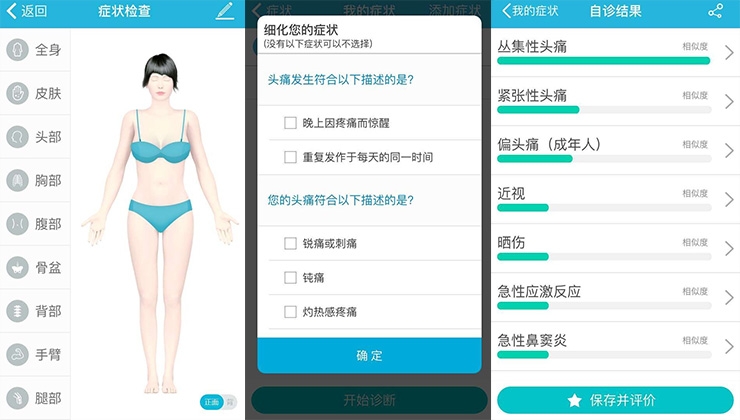Line up for three hours and see a doctor for five minutes. When people visit a major hospital, they will inevitably face such a situation. Based on the number of visits and the time limit, information asymmetry often appears, and a straw is also added to the tension between doctors and patients.
For this reason, many online consultations and registration platforms emerged to solve the problem of difficulty in queuing from the efficiency of seeking medical treatment; Wang Junbing, chairman of Hengrui Kang Information Technology Co., Ltd., started from the medical content, taking "Dr. Rui Kang" as an example. As a carrier, build a self-diagnosis library, a disease library, and provide health information and first-aid knowledge.
"The relationship between doctors and patients in China is strained and needs to start from the 'medical' and 'risk' aspects. The 'medical' aspect is to solve the problem of the scale and efficiency of medical resources. The scale needs the government to solve the problem. The mobile medical platform is very efficient. Solutions, such as online appointments, online light consultations, etc.; the 'risk' aspect is to enhance the people's own health literacy, Dr. Rui Kang is to create with this purpose.â€
In Wang Jibing’s opinion, online light clinics have built a platform for patients and doctors to communicate online and transferred offline resources to online. However, the credibility of online experts is not guaranteed. After all, people involved in them will have The existence of various interests. Therefore, rather than building a platform for patients to contact a doctor, it is better to provide users with a "third-party independent, autonomous, objective, authoritative reference platform."
This is the logic of Dr. Rui Kang’s App “intelligent self-diagnosis†module. In view of the fact that the description of self-symptoms of ordinary users tends to be subjective, how to associate these “feelings†with specific illnesses is exactly where the difficulty of intelligent self-diagnosis lies. In response to this, Dr. Rui Kang cooperates with a team of medical experts from the Hopkins University in the United States. According to the data of the 600,000 patients provided by the latter, key words are extracted, characterized, summarized and processed. Up to now, 863 specific diseases have been identified. And classified by body parts.
After the user selects the features that meet the symptoms of the body, the system will perform calculations to match the diseases that the user may have, and present them with a probability from high to low. The whole process only takes three steps: determine the body part - select the symptoms - refine the symptoms, you can complete a self-diagnosis.

Taking a headache as an example, Dr. Rui Kang's "three-step diagnosis"
In the “illness details†in the self-diagnosis results, everything from symptom descriptions, disease briefings, patient instructions, to risk factors, treatment methods, self-care, even “problems to ask doctors†and general diagnostic methods are all available. . After the result list appears, the system will also present a feedback interface that allows the user to compare and evaluate the self-diagnosis results with the doctor's actual diagnosis results to optimize the matching system. Wang Jiebing stated that as the case continues to increase, the system will improve the accuracy of matching by means of big data machine learning.

Dr. Rui Kang App "illness details" interface
Then the question came: Just like the warm tips of Dr. Rui Kang's self-diagnosis session, self-diagnosis cannot replace normal medical diagnosis. If you still want to go to the hospital for treatment, what is the significance of self-diagnosis?
Wang Jiebing told Lei Fengwang (search for "Lei Feng Net" public concern) that the diagnosis of a disease needs to be combined with the results of laboratory tests and monitoring to improve the accuracy of the diagnosis. Currently Dr. Rui Kang's self-diagnosis system has not yet accessed these Data does not replace traditional doctors.
The significance of self-diagnosis, Wang Jiebing think mainly reflected in two aspects.
First, the user does his homework before attending the doctor, which is helpful to improve the quality of doctor-patient communication. In order to ensure that nothing goes wrong, the doctor will recommend the patient to conduct a thorough examination. Although it is understandable and reasonable, if the user has a rough estimate and judgment of his or her physical condition, he or she may be able to seek treatment more efficiently if the information is symmetrical.
“A lot of ordinary people do not understand disease or understand their own health status. So when they go to the hospital, they can only passively listen to doctors. Many people don’t even know how to ask doctors. Even if they ask, there are many irrelevant problems. A few minutes later, the patient complains and feels like being sent by a doctor.†Dr. Rui Kang's self-diagnosis model allows the people to have a basic understanding of their illness before seeking medical care and prepare in advance. Communicate and communicate with doctors more efficiently.
Another point is that, in view of the relatively short objective time limit for medical visits, users can use the App to review and study on their own after attending a visit.
Dr. Rui Kang established the project in July 2015. It was officially launched in May this year. At present, it has completed a preliminary framework construction. According to the concept of Wang Jiebing, in the future, the disease will be used as a starting point to build a complete adjuvant therapy recommendation and build on this. Accurate health mall.
